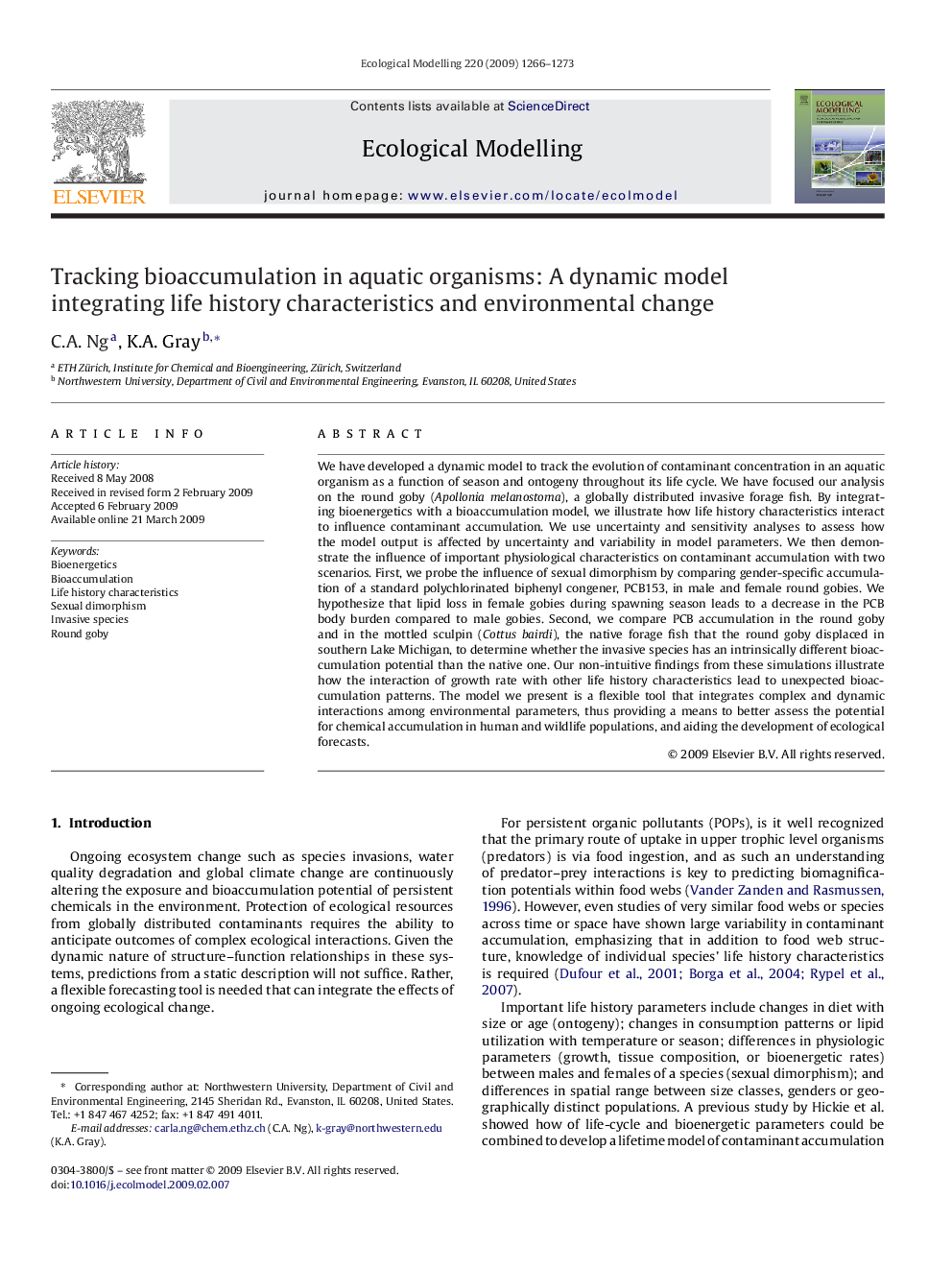| Article ID | Journal | Published Year | Pages | File Type |
|---|---|---|---|---|
| 4378107 | Ecological Modelling | 2009 | 8 Pages |
We have developed a dynamic model to track the evolution of contaminant concentration in an aquatic organism as a function of season and ontogeny throughout its life cycle. We have focused our analysis on the round goby (Apollonia melanostoma), a globally distributed invasive forage fish. By integrating bioenergetics with a bioaccumulation model, we illustrate how life history characteristics interact to influence contaminant accumulation. We use uncertainty and sensitivity analyses to assess how the model output is affected by uncertainty and variability in model parameters. We then demonstrate the influence of important physiological characteristics on contaminant accumulation with two scenarios. First, we probe the influence of sexual dimorphism by comparing gender-specific accumulation of a standard polychlorinated biphenyl congener, PCB153, in male and female round gobies. We hypothesize that lipid loss in female gobies during spawning season leads to a decrease in the PCB body burden compared to male gobies. Second, we compare PCB accumulation in the round goby and in the mottled sculpin (Cottus bairdi), the native forage fish that the round goby displaced in southern Lake Michigan, to determine whether the invasive species has an intrinsically different bioaccumulation potential than the native one. Our non-intuitive findings from these simulations illustrate how the interaction of growth rate with other life history characteristics lead to unexpected bioaccumulation patterns. The model we present is a flexible tool that integrates complex and dynamic interactions among environmental parameters, thus providing a means to better assess the potential for chemical accumulation in human and wildlife populations, and aiding the development of ecological forecasts.
